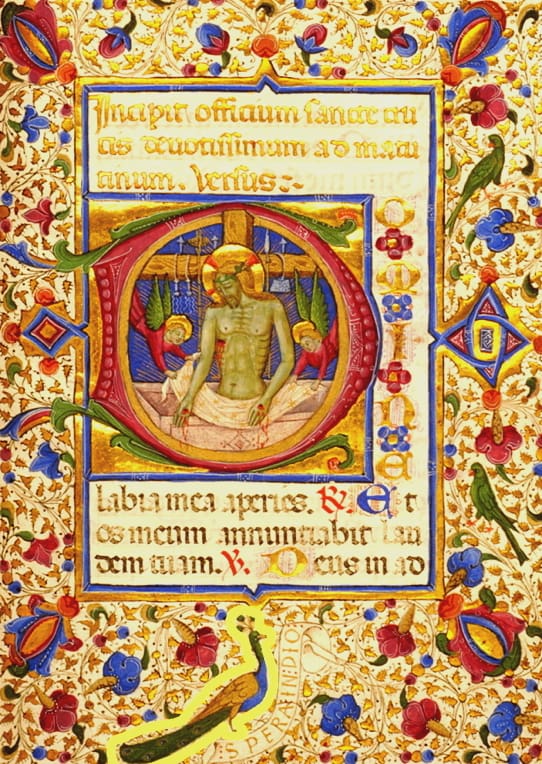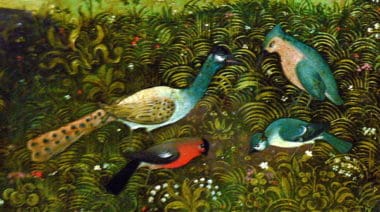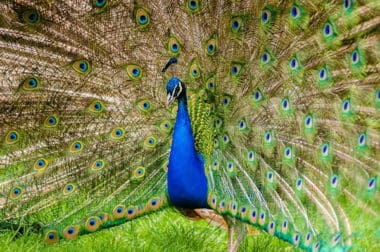Why are Peacocks Considered Symbols of the Resurrection?

Dear Father John, I was looking around the SpiritualDirection.com site and found a post from back in 2014 (Why are Holy Water Fonts at Church Doors? Why Bless Ourselves with Holy Water) in which you said that peacocks are considered signs of the Resurrection. I never knew that. Why are peacocks thought of in that way? Is it the same for peahens? One of our relatives has some peacocks and it would be nice to tell her.
Peacocks often appear in early Christian art as a symbol of the Resurrection and Eternal Life. There are various levels to this symbolism.
Medieval Theories

In medieval times, it was also thought that peacocks molt (shed their feathers) every year, and the new ones that grow are more beautiful than the old ones. Along with this idea, medieval legends included the theory that the gorgeous colors of a peacock’s feathers came from a special diet: It was believed that peacocks could kill and eat poisonous serpents, ingesting the poison and transforming it into the colors of their feathers. This too contributed to their being an apt symbol of Christ’s Resurrection, since Christ “became sin” [cf 2 Corinthians 5:21] for us on the Cross, but then rose from the dead with his glorified body and wounds having conquered the powers of evil.
Hidden Splendor
Personally, however, I have always been moved even more deeply by another level of symbolism that we can discover in this intriguing bird.
During the normal activities of a normal day, peacocks are fairly normal looking animals. And yet, all the while they are pecking and clucking like your average fowl, a hidden splendor lies underneath. When they spread their tail-feathers, this magnificence shines forth, revealing their true beauty.
The symbolism here is clear. When you see a Christian walking along the street, you can’t tell the difference between him and someone who has never been baptized. From all external appearances, they are both just human beings making their way through the hustle and bustle of daily life. And yet, underneath that ordinary appearance, the Christian soul enjoys a hidden splendor through the transforming power of God’s grace. The Blessed Trinity actually dwells in the soul who lives in that grace. And the person living the life of grace has also received a plethora of spiritual gifts: the theological virtues and the other infused virtues; the gifts of the Holy Spirit; the sacramental seals coming from baptism and confirmation, etc.
 These spiritual realities are habitually and dynamically present in every Christian who lives the life of grace, but they are not visible in the ordinary way. Their full splendor will only become visible when the Christian enters into eternal life and comes to share in Christ’s own glorious resurrection. At that point, the hidden magnificence of each Christian’s soul will be revealed, to the wonderment of all, similar to a sudden spreading of the peacock’s magnificent feathers.
These spiritual realities are habitually and dynamically present in every Christian who lives the life of grace, but they are not visible in the ordinary way. Their full splendor will only become visible when the Christian enters into eternal life and comes to share in Christ’s own glorious resurrection. At that point, the hidden magnificence of each Christian’s soul will be revealed, to the wonderment of all, similar to a sudden spreading of the peacock’s magnificent feathers.
It’s only an artistic symbol, so there isn’t a perfect correlation. But it’s a lovely one, in my opinion.
God bless you!
+
Art for this post on peacocks as a sign of the Resurrection: highlighted peacock detail of Leaf from Book of Hours, Master of Isabella di Chiaromonte, circa 1460, PD-US author’s life plus 100 years or less; detail of Birds in Gethsemane detail of Christ on the Mount of Olives, 1510s, photographed by Wolfgang Sauber, 29 December 2010, own work, CCA-SA 3.0; Peacock, photographed by Mathias Appel, 24 April 2016 own work, CC0 1.0 Universal Public Domain; all Wikimedia Commons.


